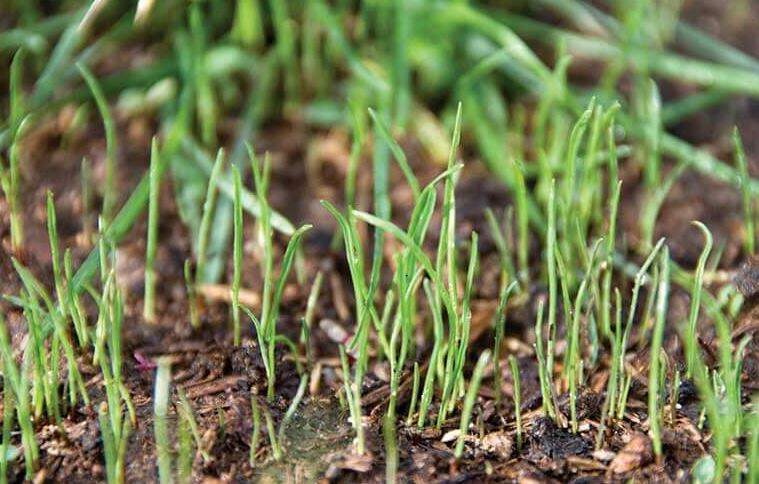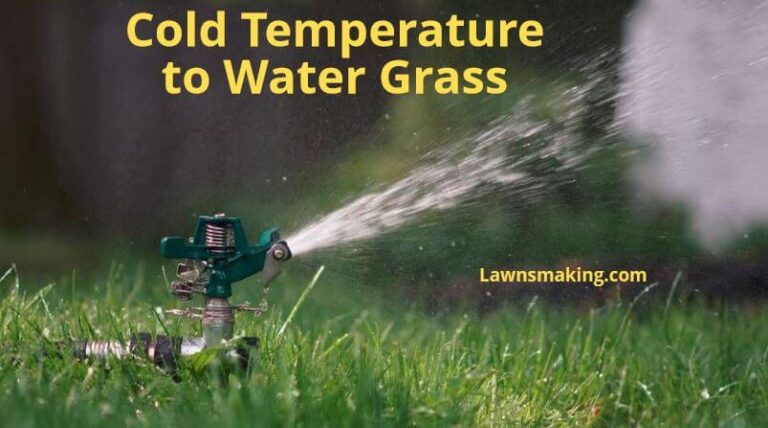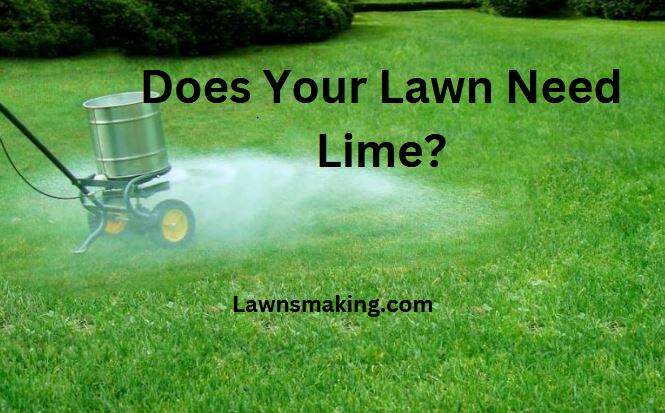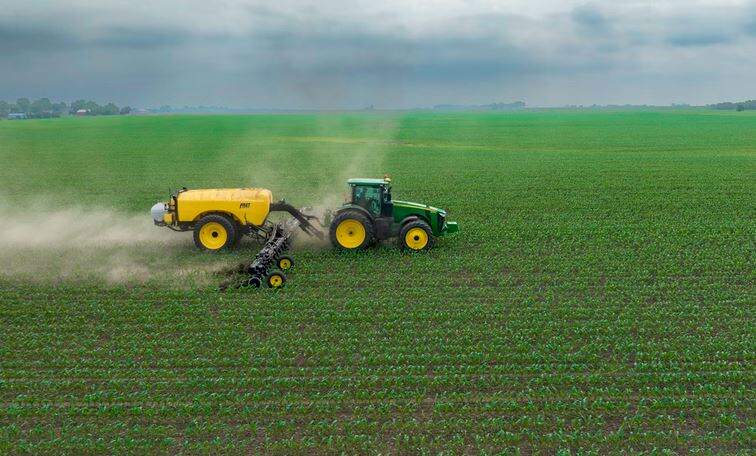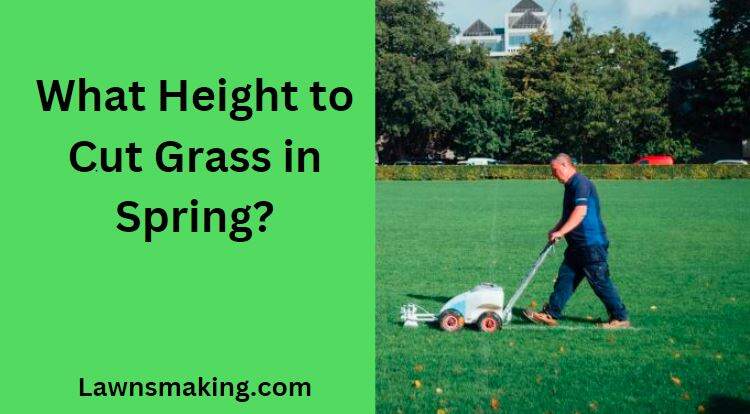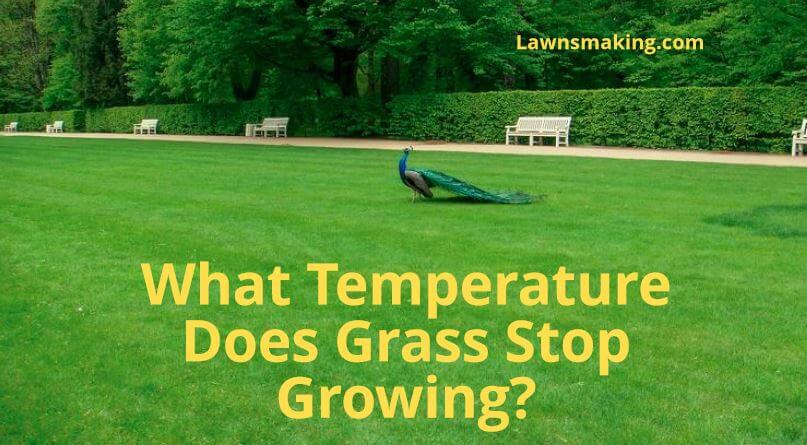
Are you struggling to maintain a vibrant green lawn as the seasons change? If so, unlock the answer to the question, “What temperature does grass stop growing?” and equip yourself with the facts to keep your lawn looking its best.
Grass stops growing when temperatures fall below 50°F (10°C) in the cooler seasons and rise above 85°F (29.4°C) during the warmer months. Knowing these critical points lets you adjust your lawn care and maintenance schedule, ensuring a healthier lawn.
Join me as I uncover the temperature ranges that signal the end of the growing season for your lawn. Here, you’ll find answers to questions like “What temperatures does grass stop growing in summer?”, “What temperatures does grass stop growing in fall?” and also explore vital topics like the role of soil temperature in grass growth.
What Temperature Does Grass Stop Growing in Summer?
Grass stops growing in summer as temperatures exceed 90°F (32°C). When exposed to extreme heat, grass enters a growth slowdown phase, which can ultimately lead to grass dormancy.
While summer is a crucial season for grass growth, grass thrives in temperatures ranging between 75°F to 90°F (24°C to 32°C). Besides being highly active within this temperature range, grass also experiences vigorous growth thanks to longer daylight hours and warmth.
Also, grass tends to enter a semi-dormant state during extreme heat to conserve energy and water.
What Temperature Does Grass Stop Growing in Fall?
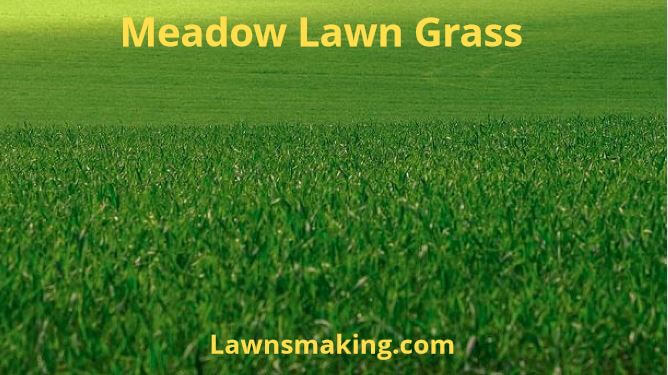
Grass stops growing in fall when temperatures drop below 50°F (10°C). During cold spells, grass growth slows down, and as winter weather approaches, grass may enter a semi-dormant state.
In the fall, your grass will thrive in temperatures between 60°F to 75°F (15°C to 24°C). Grass remains active within this temperature range while enjoying fall’s milder conditions and moderate daylight hours—allowing for healthy growth and development.
Fortunately, adequate care through proper fertilization and mowing can help prepare your lawn for dormant winter months—guaranteeing its health in the following spring.
Is There an Ideal Temperature Range for Grass Growth?
The ideal temperature range for grass growth falls between 60°F to 75°F (15°C to 24°C). Within this temperature range, grass experiences optimal conditions for growth, with peak nutrient absorption and photosynthesis, leading to healthy and robust development.
Nevertheless, this temperature range can vary depending on local climate conditions and the grass species. Understanding this ideal temperature range is essential for maintaining a vibrant and lush lawn throughout the year.
- According to the University of Nebraska–Lincoln, warm-season grasses thrive when the temperature is around 90°F degrees (32°C).
- On the other hand, cool-season grasses have an optimum temperature range of 65-75°F (18-24°C).
The table below shows the different grass species and their ideal temperature range for growth:
| Grass Species | Ideal Temperature Range for Growth |
| Kentucky Bluegrass | 60°F to 75°F (15°C to 24°C) |
| Ryegrass | 60°F to 75°F (15°C to 24°C) |
| Fescue | 60°F to 75°F (15°C to 24°C) |
| Bermuda Grass | 75°F to 90°F (24°C to 32°C) |
| Zoysia Grass | 80°F to 95°F (27°C to 35°C) |
| St. Augustine Grass | 80°F to 95°F (27°C to 35°C) |
At What Temperature Does Grass Growth Slow Down?
Grass growth slows once temperatures drop below 50°F (10°C). When temperatures are below 50°F (10°C), grass metabolic activity decreases, resulting in a redirection of resources towards energy storage and deep root development.
While the grass’s growth may not entirely stop, its growth rate becomes noticeably slow as it prepares for the cold months ahead.
Can Grass Continue to Grow in Cold Weather?
Grass can continue to grow in cold weather, but it does so at a significantly reduced rate. Cool-season grasses like fescue and Kentucky bluegrass are usually cold-tolerant and exhibit limited growth during mild winters.
In contrast, most grasses become dormant during harsh freezing conditions. During this time, visible growth halts, and the grass often changes color from vibrant green to brown.
Please consider providing proper winter lawn care to protect your grass during frigid weather, as this will improve their chances of surviving challenging months. Some of this proper winter lawn care practices include:
- Aerating the lawn with a spade
- Rake and water the lawn
- Limit the amount of traffic on the lawn
- Lower your mower’s height by a notch or two
The list below highlights different grass types and their growth rate in cold weather:
- Cool-season Grasses: Slow growth during mild winters.
- Warm-season Grasses: Dormant or no growth in freezing temps
What Are the Effects of Frost on Grass Growth?
Frost can exert detrimental effects on grass growth. When temperatures dip below freezing (32°F or 0°C), it can permanently damage the grass blades, causing them to brown and wilt. This damage can significantly impede the grass’s capacity for photosynthesis and growth.
Besides making grass weak, repeated frost can make grass susceptible to pests and diseases.
The best way to mitigate the effects of frost on your lawn is by keeping off the grass and refraining from mowing until the frost melts.
Is Grass Growth Affected by Seasonal Temperature Changes?
Seasonal temperature changes impact grass growth. Grass, a resilient plant, adjusts to seasons, fluctuating its growth rate based on temperature and environmental factors.
- As the temperatures rise in spring, grass experiences a growth surge, often called the “green-up” period.
- As the temperatures cool in fall, grass shits its energy to root development and storage, allowing it to survive winter months.
Grasping these seasonal changes in your grass’s growth pattern is vital for effective lawn care and maintenance.
How Do Warmer Temperatures Impact Grass Growth?
Warmer temperatures boost grass growth, but excessive heat causes rapid moisture loss, making grass more stress-prone. In response, grass may turn brown and go dormant for protection.
You can support grass growth in hot weather through proper watering to ensure that the grass receives adequate moisture.
Deep and infrequent watering can encourage deeper root growth while helping the grass to withstand heat stress.
During scorching weather, providing grass with some shade using temporary shading structures or planting shade trees can relieve grass during peak sun hours.
Are There Grass Varieties That Thrive in Colder Climates?
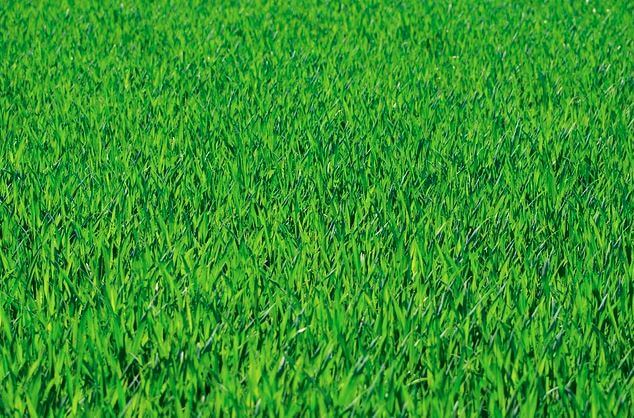
Some grass varieties excel in colder climates due to genetic adaptations for lower temperatures. Examples include Kentucky bluegrass, ryegrass, and fescue, which are cold-resistant and continue growing in chilly weather.
Cool-season grasses can maintain their green appearance in fall and winter—making them excellent choices for regions experiencing cold winters. These grasses remain active even as winter approaches. Their resilience in cold weather guarantees that lawns in chilly climates can remain visually appealing year-round.
It will help to understand the grass species best suited for your climate, as this ensures a healthy and attractive lawn irrespective of the season.
The following are the grass species that thrive in colder climates:
- Kentucky Bluegrass: Cold-resistant; remains green in winter.
- Ryegrass: Cold-resistant and maintains color in winter.
- Fescue: Cold-tolerant; suitable for cold regions.
Does Grass Growth Completely Halt in Freezing Temperatures?
Grass growth halts in freezing temperatures because cold conditions inhibit metabolic processes. When temperatures consistently drop below freezing (32°F or 0°C), grass enters complete dormancy to protect itself from frost damage.
Dormancy is a survival tactic where grass redirects energy from growth to maintaining its roots, ensuring long-term health.
During this period, visible growth may not be noticeable, and the grass might appear brown and lifeless. The change in color and lack of visible growth are natural responses to freezing temperatures.
Nonetheless, with proper care in winter, grass can recover and resume growth when temperatures rise in spring.
What Is the Role of Soil Temperature in Grass Growth?
Soil temperature is vital in grass growth as it affects seed germination, plant physiology, and overall health. It influences dormancy, nutrient uptake, and various physiological processes in grass plants.
According to the University of Massachusetts Amherst, the ideal soil temperature range for root growth is approximately 55 to 65°F (13-18°C). Therefore, it will help to understand the role of soil temperature in grass growth, especially if you want to maintain a healthy lawn.
Soil temperature is not always synchronized to air temperature; it often lags, particularly in spring and fall.
The lag between soil and air temperature can significantly impact when and how grass enters dormancy or resumes growth.
Therefore, awareness of this lag can help you make informed decisions about lawn care timing.
- In cooler weather, soil can retain warmth from summer. Additionally, soil’s ability to retain warmth allows grass to have extended growth periods in cooler months.
- In contrast, soil can cool down more slowly in colder months than air, creating a more hospitable environment for root development. The slower-cooling soil supports root growth and nutrient absorption, even in chilly air.
| Soil Temperature Range | Grass Activity |
| 50°F to 75°F (10°C to 24°C) | Optimal growth and nutrient absorption. |
| Below 50°F (10°C) | Slower growth and redirection of resources. |
| Freezing (32°F or 0°C) | Dormancy, no visible growth. |
Besides affecting root activity, soil temperature can also determine nutrient uptake and overall grass health, making soil temperature management vital.
So, consider using soil thermometers to monitor soil temperature to make informed decisions about lawn care practices. Soil thermometer readings can help you adjust watering schedules, choose ideal grass species, and provide winter protection for the soil to ensure a thriving lawn.
Final Thoughts
In this exploration of “What temperature does grass stop growing?” we have uncovered a delicate balance between nature’s rhythms and the science of lawn care.
Landscaping enthusiasts and homeowners need to understand the connection between temperature and grass growth if their goal is to nurture a vibrant, healthy, and resilient lawn.
